

Quick Summary
- The online teaching tools include communication tools, whiteboards, work planning tools, video tools and document management tools.
- Online communication tools such as Google Meet, Zoom and Microsoft Teams help to connect with the students virtually.
- Tools like MS Office, G-Suite, Google Calendar, Google Forms, Youtube, and Google Jamboard are beneficial in online teaching.
Table of Contents
With the outbreak of Covid-19, the education industry experienced a sudden shift to remote learning, leaving both teachers and students facing a range of new challenges. From limited internet connectivity to the need for effective online teaching tools, the transition to virtual classrooms was not easy. However, educators worldwide have risen to the challenge, of creating a variety of online teaching tools to improve student learning outcomes. As the world continues to adapt to the new normal, online education is set to become a crucial component of the modern education system.
If you’re an educator looking for effective web tools in teaching that you can use remotely then, you’re in the right place. In this blog, we will explore the top online teaching tools that can help you facilitate productive remote lessons. From interactive whiteboards to free teaching aids, we’ve got you covered.
Online Communication Tools
Building a strong communication network between educators and students is important for effective education and for creating interactive sessions. Whether in a real classroom or a virtual classroom, effective communication is essential for effective teaching and learning. It is a challenging task to make classes interactive and collaborative through the screens.
Platforms for communication make it possible to communicate with bigger groups through video conferencing, instant messaging, voice calls, virtual rooms, and other methods from anywhere and on any device. Some of our favourite online teaching tools are listed below:
1. Google Classroom
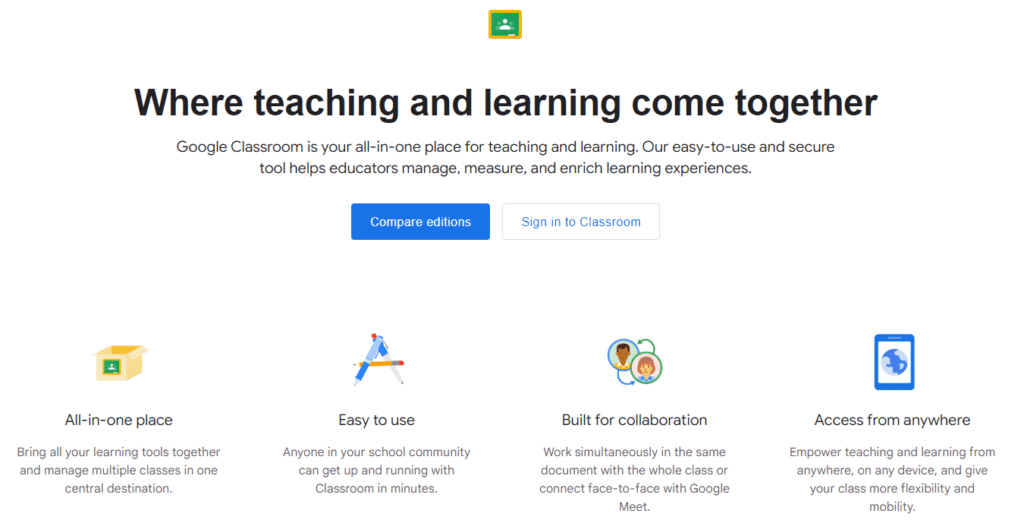
Undoubtedly, one of the most adaptable online teaching tools currently available is Google Classroom. Being a component of G Suite, this learning management system (LMS) enables teachers to use Google apps to create lessons, tests, and papers that can all be found in Google Classroom. Classroom helps teachers save time, keep classes organized, and improve student communication.
Pros:
- Easy to add people
- Easy screen sharing
- Productivity Tools and Integration with Other Google Services
- secure application
Cons:
- Relatively fewer features than other apps
- Users from other domains are not permitted to enter
2. ZOOM

One of the best remote teaching tools for online education is Zoom, which enables you to schedule meetings and webinars as well as teach classes to students. To help students understand diagrams, Zoom also features a whiteboard tool. Furthermore, installing it on your PC is free and simple.
Pros:
- Automatically schedule meetings
- can record the call as a video
- Breakout rooms
- Support a large group of students
Cons:
- Need app installation
- Less control over other attendees
3. Microsoft Teams

Microsoft Teams is the ultimate tool for collaborating at work. MS Teams provide a fully decked-out document storage, chat, and online meeting environment. Each program is designed for work collaboration and has a slightly different set of features and benefits.
Pros:
- Integration of all tools in a single place
- Useful chat additions
- Seamless files search, backup, and collaboration
Cons:
- Unnecessary storage consumption
- Increased security risk
- A limited number of channels
Related Articles:
Online Whiteboards
With the use of whiteboard software, pupils may more easily follow handwritten instructions and annotated illustrations. They help to give the blackboard experience to the students. For making various forms of diagrams, charts, and graphs as well as for other visualization applications, the majority of these programs provide an endless canvas with shape libraries.
An online whiteboard app is a web-based interactive and remote teaching tool that enables teachers and students to work together remotely in real time.
It can help in various ways such as:
- Structuring topics of discussions
- Illustrating the points
- Creating a mindmap
- Mark key information
Some of the tools that you can use are :
1. Google Jamboard

Google’s Jamboard is a collaborative whiteboard that lets you capture, organize, and share your ideas in real time with others. Jamboard includes a built-in webcam for video conferencing but works best on the internet
Pros:
- Can add images, and notes, change the background and use different types of pencils and shapes
- Students can pull files from Google Drive and collaborate while using Google Meet.
Cons:
- Lacks the ability to add media content such as music and videos.
2. Whiteboard.fi

Whiteboard.fi allows you to share a digital whiteboard with up to 50 students online synchronously. Students also have their whiteboard that teachers can push content to as an image and have them manipulate, type on, or draw on. Teachers can see all student whiteboards and can even copy student boards to their own and share them with the rest of the class. It is one of the most effective web tools in teaching.
Pros:
- Share digital whiteboards synchronously with entire classes
- Students work on their whiteboards that the teacher can see
- Teachers can share their boards with pdfs as backgrounds for students to work on
- Can be used on any device
Cons:
- Teachers and students cannot work on the same boards together at the same time
- Limits to 50 students per room
- Cannot save boards other than as an image which cannot be changed later
3. Canvas for Chrome
Chrome Canvas is a creative drawing tool available in either the Chrome browser or on a Chromebook. It is fun and easy to use, especially on a touch screen. The four drawing tools–pencil, pen, marker, and chalk–can be customized with color, size, and opacity. It’s a digital whiteboard in its simplest sense.
Pros:
- Easy to use
- Works with Firefox and Safari as well as Chrome
- Students could solve math problems step by step. Teachers could share solution sets in the form of annotated answer keys or step by step.
Cons:
- No shapes function
- No text tool
- No way to customize canvas size or aspect ratio

Work Planning Tool
When you work remotely, keeping to a routine is even more important. A reliable schedule can help you make the most of your time, especially during stressful times.
One needs to:
- Create daily schedules for classes
- Creating lesson plans and sharing them with students, administrators, and colleagues.
- Mark important days for the classes
- Schedule and notify everyone of the classes and appointments
For this, you can use the following tools:
1. Calendly
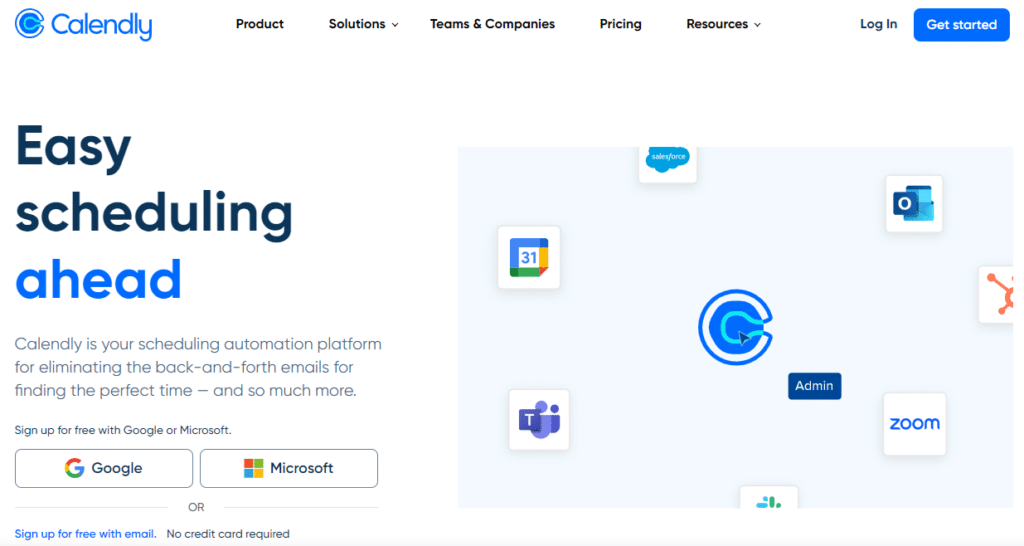
Calendly is a simple yet intuitive software for scheduling. Compared to conventional scheduling solutions, this software is more simplified and efficient, and users can easily set it up, manage, and juggle schedules, appointments, and other related information.
Pros:
- Can be embedded with websites
- Allows multiple invitees to schedule similar slots
- Fully optimized for all devices
Cons:
- Synching errors
2. Google Calendar
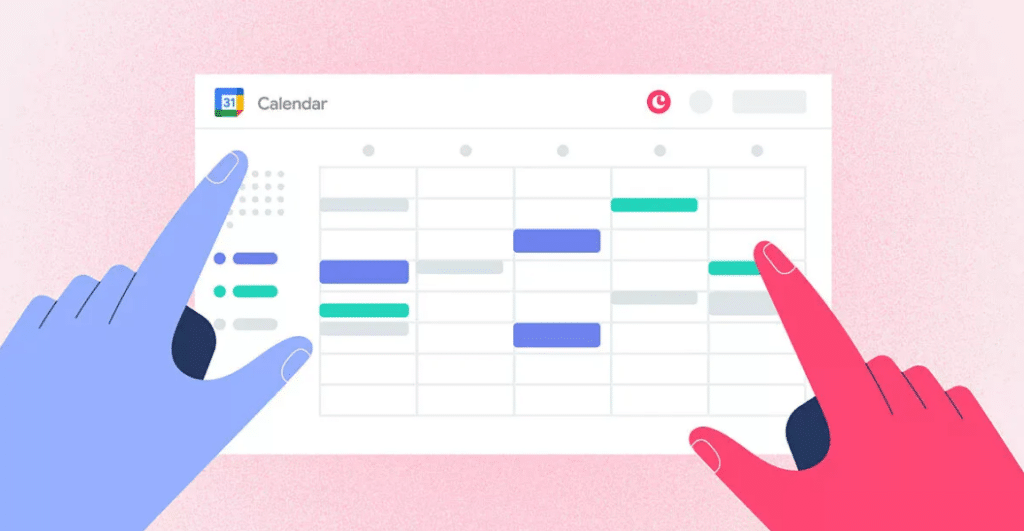
With Google Calendar, you can quickly schedule meetings and events and get reminders about upcoming activities, so you always know what’s next. Calendar is designed for teams, so it’s easy to share your schedule with others and create multiple calendars that you and your class can use together.
Pros:
- Schedule meeting rooms
- Simplified appointment slots tool
- Easy to navigate through
Cons:
- Difficulty connecting with calendars from other apps.
- Can be difficult to read if it gains too many appointments
Document Management Tool
Document management can be one of the most challenging tasks in online teaching. A teacher has to keep track of a lot of papers and documentation. It is made simpler for teachers to create documents with the help of online teaching aids. For the same purpose, the following tools can be useful:
1. MS OFFICE

Microsoft Office is a suite of applications designed to help with productivity and completing common tasks on a computer. You can create and edit documents containing text and images, work with data in spreadsheets and databases, and create presentations and posters.
Pros:
- Allows Workers to Access Documents and Email from Anywhere
- Advanced Security
- Automatic updates
Cons:
- An Internet connection is always required to access up-to-date files
- And doesn’t support any offline editing
2. G SUITE

With Google Apps now known as G Suite, it offers a superior alternative in terms of the features and capabilities of the product. Additional enterprise-grade features created for big organizations and tailored for education are available in the Google Apps for Education suite.
It has extra features like improved analytic and search capabilities, powerful controls, and many advanced communication tools. It is designed to expand possibilities for planning, critical thinking, teamwork, and creativity, ultimately enhancing the student’s goals.
Pros:
- Provides reliable and better storage security
- Provides access to Drive, Gmail, Docs, Calendars, etc
- Allows to access its applications simply by one-time login
Cons:
- Internet connectivity required
Online Video Tool
A highly inventive method to effectively educate and interact students online is by sharing videos of your courses. Videos are excellent means for teachers to continue their teaching curves and for students of all backgrounds to continue learning in the new normal. Contrary to common assumption, creating videos is not an expensive solution it’s probably the most affordable. The following are some of the effective web tools for creating videos:
1. YouTube

The usage of YouTube in the classroom can make classes more interesting and keep students engaged while they are studying. For visual learners, it is incredibly helpful. Teachers can utilize YouTube to find videos that will make their classes easier to grasp and more enjoyable. They can even contribute their videos to the site.
Pros:
- Free of cost and can be used anywhere
- It can serve as an additional resource.
- Offers multiple learning options
Cons:
- Some videos on YouTube are not suitable for children.
- Need to have an internet connection to access it
- Have a lot of advertisements
2. LOOM
Loom is a screen recording tool that lets teachers record audio, video, browser windows, or entire screens in a Chrome extension, desktop app, or mobile app. There is just one creator authorized per free Loom for Education account, so teachers must record everything themselves. No account is necessary for students.
Pros:
- Flexible sharing features.
- Allow you to customize screen capture and frame rate
Cons:
- Limited editing options
- Slow program
Online Quiz Makers
As virtual learning is growing, it has become more difficult to maintain students’ participation. Quizzes are always a great way to check a student’s performance. Teachers can design exams and quizzes using online quiz makers that are simple to construct and easy to analyze.
These online quizzes will help in :
- Getting more engagement
- Easy data collection
- Create, format, and share assessments online
Several of the tools used to create online quizzes include:
1. Google Forms
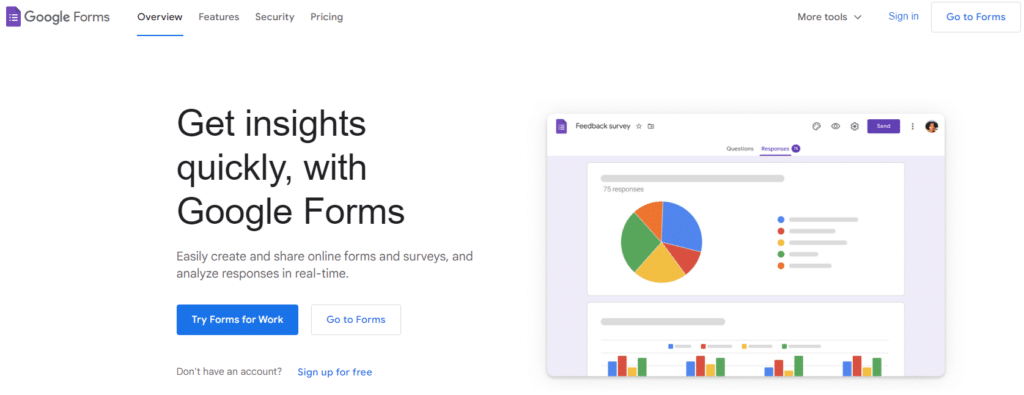
Google Forms is one of the most widely used quiz-making tools. It allows us to include different types of questions such as short answers, paragraphs, multiple selections, verification boxes, pull-down, linear scale, and a grid of several options, among others.
Pros:
- Easy to use interface
- Strong features like the file upload element
- Stores the feedback received
Cons:
- An internet connection is required
- Lack of integrations with third-party tools
- Only capable of building surveys and questionnaires: not versatile
2. iSpring
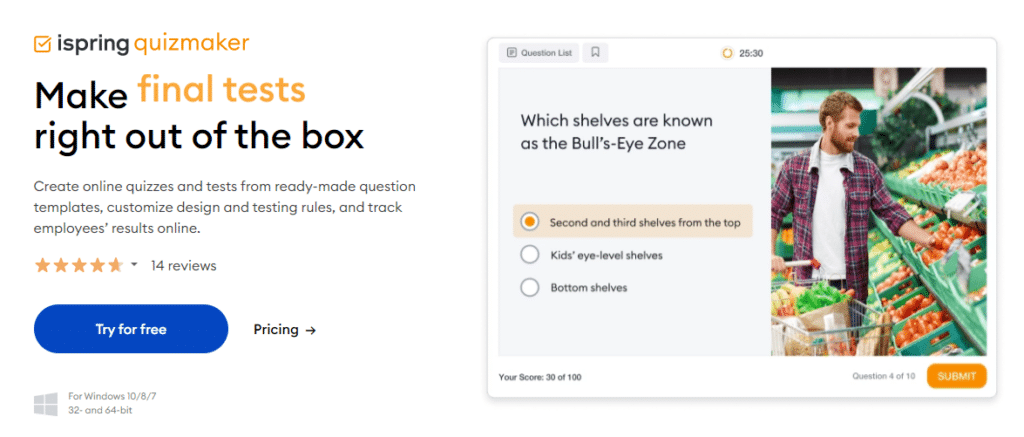
iSpring QuizMaker is a powerful authoring software for creating effective quizzes and surveys with 14 ready-to-use question templates that allow you to train, engage, and assess learners’ results.
Pros:
- One can choose from different formats for the quiz
- Can add multimedia to both questions and answers
Cons:
- Limited features
Teach Effectively With Online Teaching Tools
These online education apps are becoming increasingly common as new technology advances. The education sector is improving its abilities as more and more online learning occurs. Online teaching strategies enhance learning by making it more interesting, interactive, and entertaining. Hence using these effective web tools can make your teaching experience enjoyable.
If you want to share your knowledge with others, join us today! Earn money by answering questions from students worldwide by becoming a Chegg Q&A expert. You can work whenever and wherever you choose.
Chegg India is an online platform that provides opportunities for educators and others who desire to teach in non-traditional venues. You may sign up as a subject expert for free and earn a comfortable livelihood wherever you are. All you have to do is sign up!

Frequently Asked Questions
What are the best online teaching tools for teachers?
One can use various tools for different purposes for effective remote teaching. Some of the best tools to conduct online classes are Google Classrooms, Zoom, GSuite, Online Whiteboard, YouTube, etc. These tools will help the user in maintaining records, schedule classes, record videos, give homework, etc.
How do I make online teaching more interactive?
It is a tough challenge for teachers to keep the students engaged while teaching virtually. For this, one can adopt the following strategies :
1. Include more videos in your courses.
2. Make your presentations more dynamic
3. Encourage online discussions
4. Quizzify/ gamify your teaching
What are remote learning tools?
Remote learning refers to situations in which the student and the teacher are not physically present in a traditional classroom setting. Instead, information is transmitted via technological methods like online forums, video conferencing, and virtual exams.
What tools do teachers use?
Some of the best tools that teachers use are Zoom, Google Meet, MS Teams for communication. Google Jamboard and whiteboard for teaching. Google Calendar for work planning. MS Office and G Suite for document management. YouTube for online videos. Lastly, Google Forms for making quizzes.
To read more related articles, click here.
Got a question on this topic?



